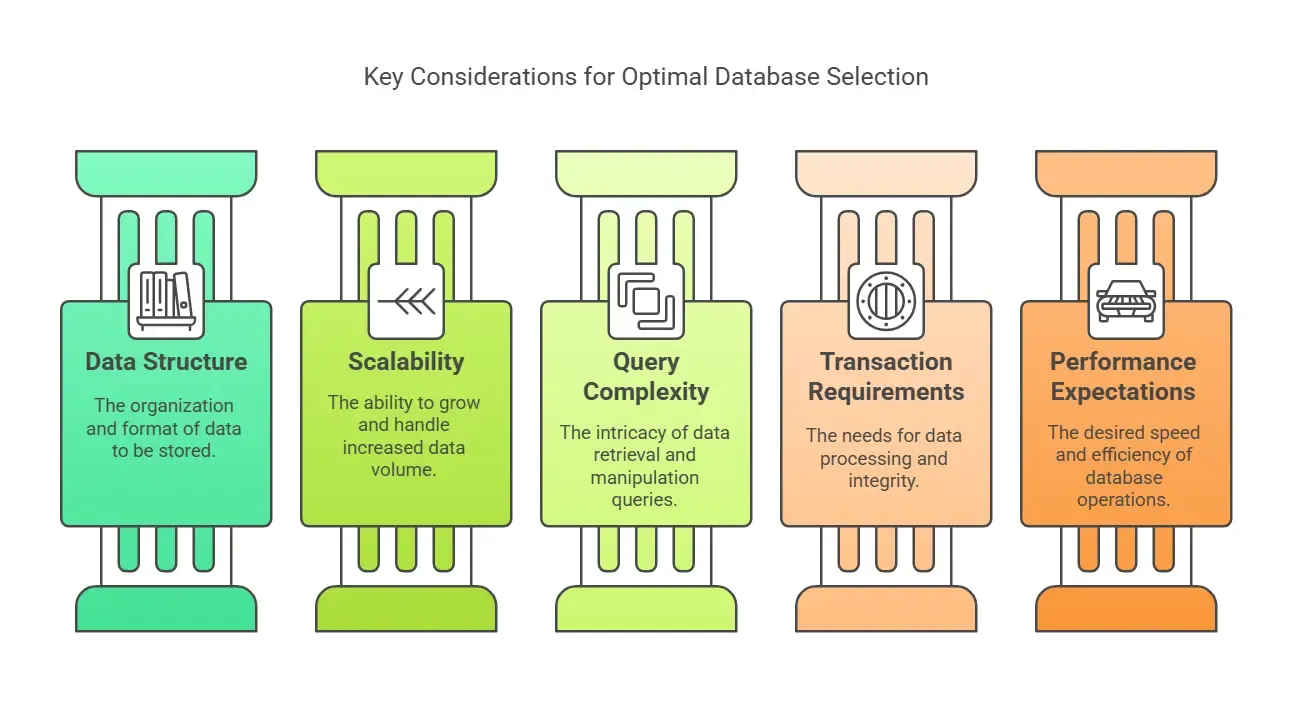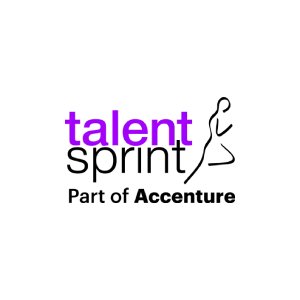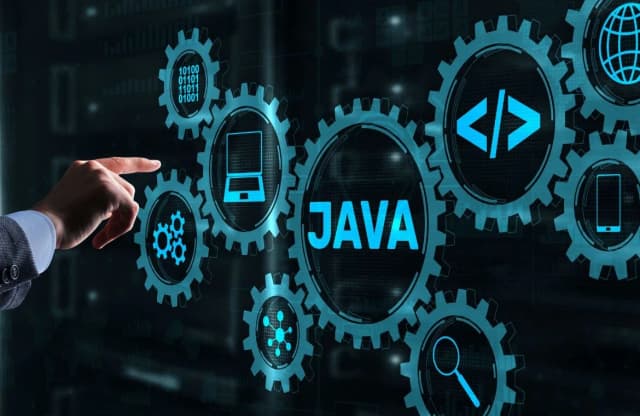How to Become a Full Stack Developer in 2025: The Ultimate Step-by-Step Guide

Full stack development offers remarkable opportunities for complete beginners and experienced programmers alike. Companies, including tech giants like Google, Amazon, and Deloitte, actively seek these versatile professionals who can handle both front-end and back-end development.
The financial rewards make this career path attractive. An entry-level full stack developer in India earns between ₹3,00,000 to ₹5,00,000 annually, while a senior-level full stack developer can earn up to ₹21,00,000 annually, according to Glassdoor. Reaching this level requires you to master multiple programming languages, frameworks, and development tools.
Want to become a full stack developer? This complete guide will show you each step to help you learn the fundamentals and land your first job in this exciting field.
What is a Full Stack Developer?
A full-stack developer is an IT professional able to develop applications on both the frontend (client side) and backend (server side) of websites. They have knowledge of how to design, build, and deploy entire apps, managing anything from user interface to databases and server-side logic.
With the increasing use of AI-based software development, full-stack developers are also incorporating machine learning models, automation tools, and AI-based APIs into their applications. This extends their job beyond conventional web development and positions them as integral players in creating intelligent and scalable applications.
Steps to Be a Full Stack Developer
Step 1: Understand Basics of Web Development
Learning to become a full stack developer starts with the fundamentals of web development. A strong foundation in these simple concepts will help you build your expertise.
Web development relies on three main technologies that combine to create functional and attractive websites. Here are the building blocks you need:
- HTML (HyperText Markup Language) - This acts as the skeleton of every webpage and defines its structure and content. HTML elements like headings, paragraphs, images, and links organize information on a page. The browser uses HTML to display content in the right order.
- CSS (Cascading Style Sheets) - CSS takes your HTML structure and makes it visually appealing. You can adjust colors, fonts, spacing, and positioning, and create layouts that adapt to different screen sizes. Websites would look bland without CSS.
- JavaScript - Once you know HTML and CSS, JavaScript helps you create dynamic and interactive web experiences. Modern websites come alive with JavaScript. It lets you change content, validate forms, transform images, and respond to what users do.
Web development splits into three main areas:
- Frontend Development: Client-side development focuses on what users see and interact with directly.
- Backend Development: Server-side development manages data storage, processing, and application logic.
- Full Stack Development: This combines frontend and backend skills.
These fundamentals matter because every framework, library, and advanced concept builds on them. These three languages have different purposes but work together naturally to create complete web experiences.
Your path to full stack development will expand beyond these basics. Make sure you understand HTML, CSS, and JavaScript well before moving ahead.
Step 2: Master Frontend Development
Learning web development's simple concepts opens the door to your next challenge - becoming skilled at frontend development. This involves creating what users see and interact with.
The most popular frontend frameworks in 2025 include - React.js, Vue.js, Angular, and Svelte.
Frontend development has changed a lot in recent years. Here’s what you’re expected to know:
- JavaScript frameworks to build flexible and interactive web applications
- Responsive design has become a must-have skill for frontend developer
- CSS frameworks like Tailwind CSS have grown more popular
- State management is a vital part of frontend development. Different frameworks use different tools - Redux Toolkit, Zustand, or Context API for React and NgRx for Angular.
Frontend developers now regularly work with:
- Testing Frameworks: Jest for unit testing, React Testing Library for component testing, and Cypress for end-to-end testing.
- Performance Optimization Techniques: Code splitting, lazy loading, and server-side rendering.
- AI-Powered Development Tools: GitHub Copilot and similar assistants that help write code faster.
Step 3: Learn Backend Development
A strong backend, the server-side component that powers web applications, exists behind every polished user interface.
Backend development creates and maintains server-side logic, databases, and APIs that power websites and applications. Backend code runs on servers instead of browsers and handles everything from data storage to business logic implementation.
You'll need to pick a server-side programming language first. These languages lead backend development in 2025:
- Python: Versatile and beginner-friendly, excellent for AI integration
- Java: Popular among enterprise companies for stability, efficiency, and scalability
- JavaScript (Node.js): Enables using the same language across your entire stack
- PHP: Accessible to more people for web development despite its divisive reputation
- Go (Golang): Focused on simplicity, reliability, and efficiency
- C#: Easier to learn than C++ with excellent Microsoft ecosystem integration
Some key responsibilities of a backend developer include:
- Understanding RESTful APIs to let different software systems communicate securely over the internet.
- Server-side security (like user authentication (JWT, OAuth), data encryption, and secure code practices) for performance optimization.
- Understanding SQL and NoSQL options
- Building small server-side applications
Step 4: Work with Database and Storage
Database management serves as the foundation of modern web applications. A full stack developer's knowledge of data storage solutions directly affects application performance, scalability, and user experience.
Databases come in two main types: SQL (relational) and NoSQL (non-relational). Knowing when to use each type is a vital skill that every aspiring full stack developer needs.
SQL databases work great for applications that need:
- Complex queries and transactions
- Well-laid-out data schemas
- Boosted data integrity
- Financial applications or content management systems
- MySQL, PostgreSQL, and Microsoft SQL Server are some prominent SQL options.
On the flip side, NoSQL databases excel when your project needs:
- Horizontal scalability (adding more servers)
- Flexible data models without predefined structure
- High performance with large data volumes
- Applications like social media platforms or live systems
- MongoDB, Redis, and Cassandra are accessible to more people as NoSQL solutions.
Cloud storage solutions are now vital for handling large media files and unstructured content. Services like Amazon S3, Google Cloud Storage, and Azure Blob Storage offer flexible options to store images, videos, and documents outside your database.

Step 5: Learn Version Control and Development Tools
Version control systems are a crucial part of modern development workflows. A full stack developer needs to become skilled at these tools to work better with teams and optimize the coding process.
Git has become the standard version control system because of its distributed nature and powerful features.
What makes Git particularly valuable? You can track changes in your codebase, go back to previous versions, and work naturally with your team members. Git keeps your project's entire history on your machine so you can work offline while maintaining a complete record of all changes.
You should also get familiar with GitHub, GitLab, or Bitbucket, which are platforms that add more features to Git for project management and team cooperation.
Full stack developers also need to master these critical tools:
- Postman: This API testing tool helps you create, test, and document APIs in the quickest way to ensure smooth communication between front-end and back-end components.
- Testing frameworks: Jest lets you test both front-end and back-end components to prevent issues as you develop.
- CI/CD tools: Systems like Jenkins, GitHub Actions, or GitLab CI automate building, testing, and deployment to increase efficiency and reduce manual errors.
- Code analysis tools: SonarQube looks at your code for potential errors and improvements to help you develop better coding habits.
These tools will be invaluable throughout your career.
Step 6: Master DevOps and Deployment
DevOps represents a crucial transformation in modern development that full-stack developers need to welcome to stay competitive.
Full-stack developers should start their DevOps experience by grasping these core philosophies:
- Collaborative Culture: Teams break down barriers between developers and operations to share responsibility for product quality.
- Continuous Integration/Continuous Deployment (CI/CD): Build, testing, and deployment processes become automated to deliver software reliably.
- Infrastructure as Code (IaC): Code manages infrastructure instead of manual processes, which brings consistency to environment setup.
- Automated Testing: Test automation covers both frontend and backend components
Full-stack developers must know these deployment strategies:
- In-place deployments: System updates happen with minimal disruption
- Blue/green deployments: Two similar environments run simultaneously - blue (old) and green (new) to reduce downtime
- Canary deployments: New versions roll out gradually to a small part of infrastructure for testing
Step 7: Learn Full Stack Framework and Best Practices
Full-stack frameworks blend all your previous learning into unified development ecosystems that make building web applications easier. These frameworks give you integrated tools to handle both frontend and backend development with technologies that work together.
MERN and MEAN stacks lead the industry in 2025. Both stacks use MongoDB, Express.js, and Node.js but differ in their frontend approach. MERN uses React for its interface, while MEAN goes with Angular. Your project's needs, team's skills, and priorities usually determine which one you pick.
Why use full stack frameworks?
These frameworks bring several benefits:
- They make client-server communication smooth
- Your team can work better across the whole application
- You can use JavaScript throughout the stack
- You get detailed tools that speed up development
The right full-stack framework depends on your development budget, project needs, growth plans, and team's expertise. Your goals and target audience should be clear before you make this choice.
Best practices will help you build robust applications and optimize your development process. Here's what you need to focus on:
- Clean code
- Well-planned application architecture
- Testing the model
- Performance optimization
Step 8: Gain AI Skills for AI-Powered Software Development
AI has altered the map of application development, and AI skills have become increasingly valuable for full stack developers. Building artificial intelligence capabilities into web applications is no longer optional in 2025 - it's a core competency that competitive developers need.
Your development experience should focus on practical AI technologies that complement your existing stack. You'll want to understand:
- Machine Learning Integration - You need to incorporate pre-trained models into your applications through APIs like TensorFlow.js or Hugging Face. This addition allows you to include features such as image recognition, sentiment analysis, or natural language processing without becoming a data scientist.
- AI-Assisted Development - Coding assistants such as GitHub Copilot or Amazon CodeWhisperer will help you work faster.
- Intelligent User Experiences - You should become skilled at implementing AI-powered features like chatbots, recommendation systems, and predictive interfaces. Libraries such as Dialogflow or Botpress make it easier to create conversational interfaces that improve user participation.
- Automated Testing with AI - Tools like Testim or Mabl utilize machine learning to create resilient, self-healing tests.
To gain the AI skills for software development, you can consider enrolling in a course, like AI-Powered Software Development Course.
Step 9: Work on Practical Projects and Build Portfolios
Hands-on experience distinguishes successful full stack developers from others. Building tangible projects is the quickest way to strengthen your skills and show your capabilities to potential employers.
Your main goal should focus on creating a well-rounded portfolio after mastering core technical skills. Your path to becoming a professional full stack developer starts with practice. More real projects lead to a better understanding of development concepts.
Quality matters more than quantity in portfolio projects. Pick 3-5 projects that showcase your diverse abilities. Here are some potential projects:
- Beginner level: To-do applications, weather apps, or blogging platforms
- Intermediate level: Portfolio websites, content management systems, or project management tools
- Advanced level: E-commerce platforms, real-time collaboration tools, or video conferencing applications
Step 10: Keep Updated and Continue Learning
Tech evolves faster than ever, and learning never truly ends. The technology world changes at breakneck speed. New frameworks, libraries, and tools emerge constantly. Staying current with these advancements is significant for full-stack developers to remain competitive.
Curate your learning resources wisely:
- Follow tech blogs, news websites, and forums dedicated to web development
- Join platforms like Twitter, LinkedIn, and GitHub to connect with other developers
- Take online courses on platforms like Udemy, Coursera, and freeCodeCamp
- Participate in coding challenges on platforms like LeetCode, CodeSignal, and HackerRank
Conclusion
A full-stack developer's path demands dedication, structured learning and hands-on experience. You start with simple web development concepts and move through frontend and backend technologies.
Your understanding grows deeper when you build real-life projects during the learning phase. This approach helps create an impressive portfolio.
The path looks challenging at first glance. Breaking it into smaller steps makes it manageable. You can take a detailed full-stack developer course to learn these skills step by step.
Your success as a full-stack developer ties directly to your drive for continuous learning. Technology changes faster every day. Staying current with new tools, frameworks, and best practices keeps you competitive in this ever-changing field.
Frequently Asked Questions
Q1. What skills are essential for becoming a full-stack developer in 2025?
To become a full-stack developer, you need to master front-end technologies like HTML, CSS, and JavaScript frameworks, back-end languages such as Node.js or Python, database management, version control with Git, and deployment tools. Additionally, understanding DevOps practices and having basic AI integration skills will give you a competitive edge.
Q2. Is it still worthwhile to learn coding in 2025?
Absolutely. Coding skills remain crucial in the tech industry, with increasing demand for developers who can work with AI, cloud computing, and data analytics. Learning to code opens up numerous career opportunities and allows you to adapt to the evolving technological landscape.
Q3. How can I gain practical experience as an aspiring full-stack developer?
Build a portfolio of projects that showcase your skills across the full stack. Start with simple applications and progressively tackle more complex ones. Contribute to open-source projects, participate in hackathons, and consider freelancing to gain real-world experience. These activities not only hone your skills but also demonstrate your capabilities to potential employers.
Q4. What are the career prospects for full-stack developers in the coming years?
The outlook for full-stack developers is very positive. The U.S. Bureau of Labour Statistics projects a 22% job growth in this field from 2020 to 2030, which is much faster than average. Full-stack developers are in high demand due to their versatility and ability to work on all aspects of web application development.
Q5. How can I stay updated with the latest trends in full-stack development?
Continuous learning is key in the fast-paced tech world. Regularly follow tech blogs, participate in online coding communities, attend webinars and conferences, and take online courses. Dedicate time to experimenting with new technologies and frameworks. Engaging in personal projects or contributing to open-source initiatives can also help you stay current with industry trends and best practices.

TalentSprint
TalentSprint is a leading deep-tech education company. It partners with esteemed academic institutions and global corporations to offer advanced learning programs in deep-tech, management, and emerging technologies. Known for its high-impact programs co-created with think tanks and experts, TalentSprint blends academic expertise with practical industry experience.



